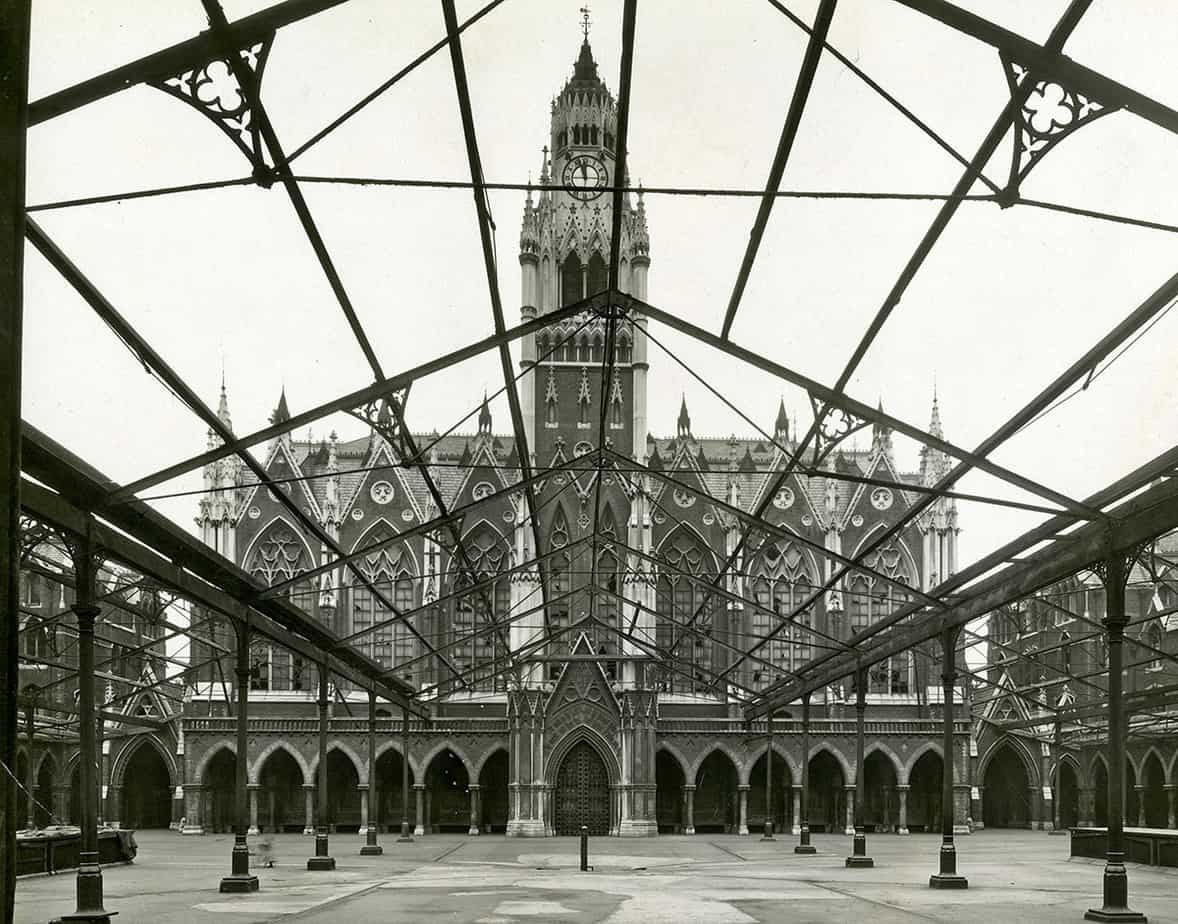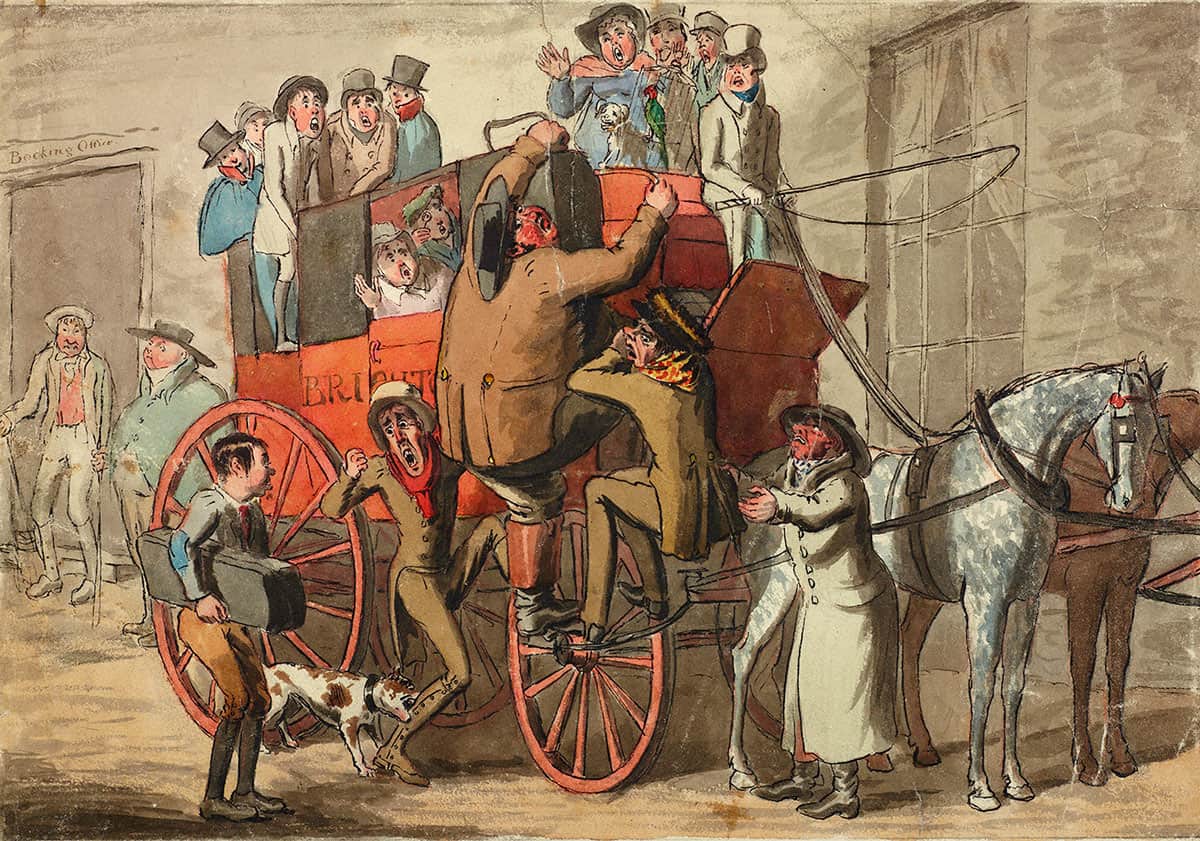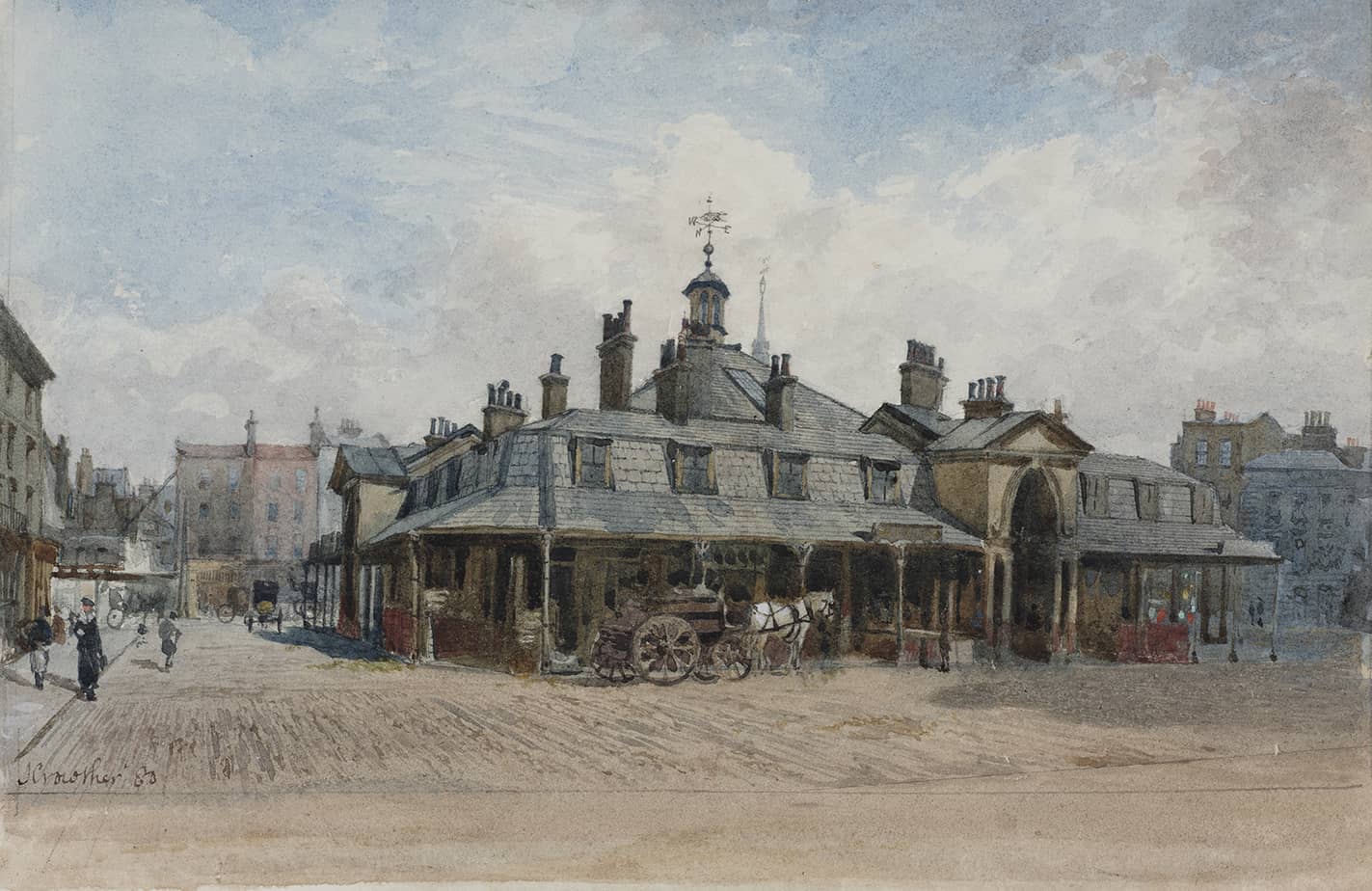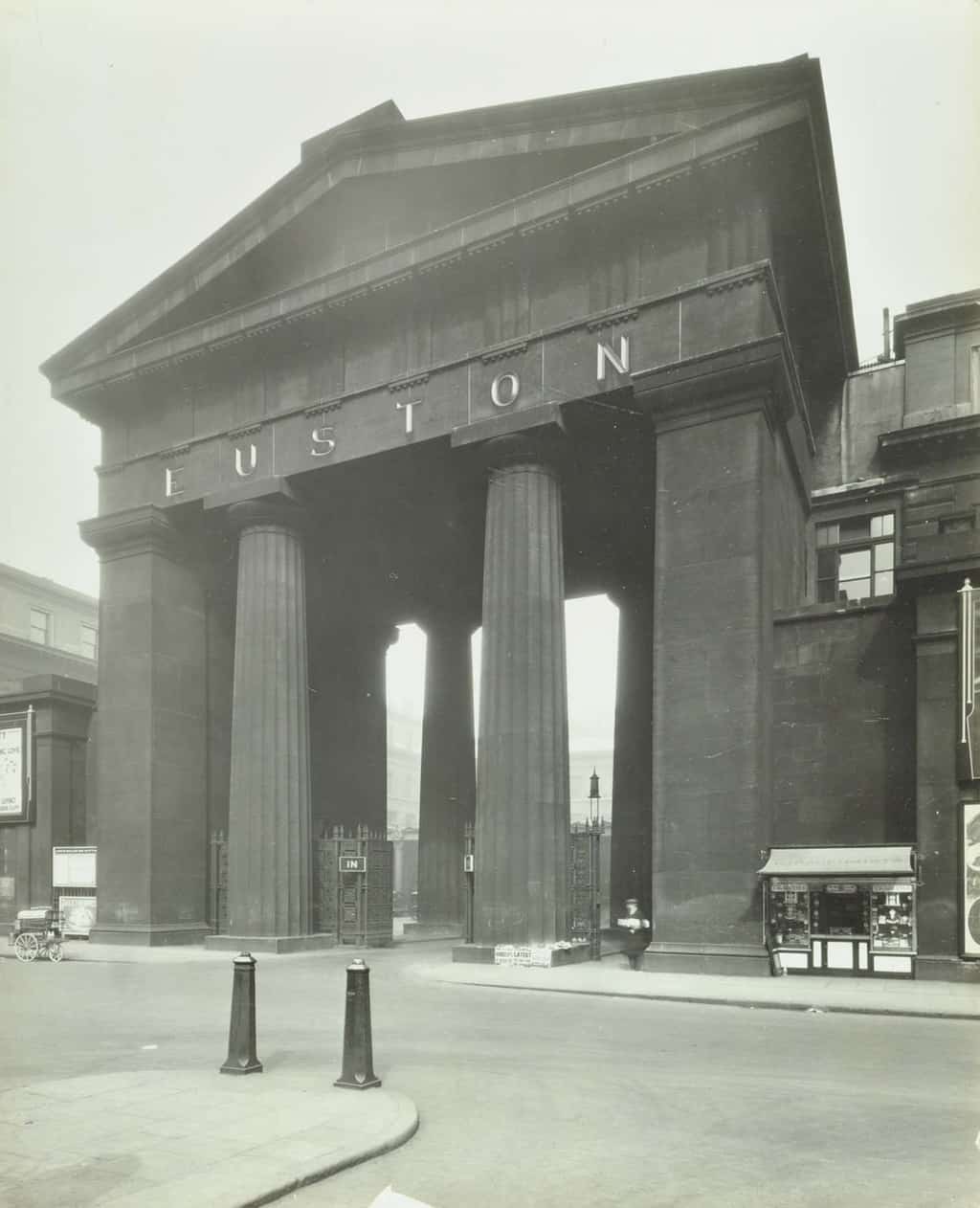A vast gothic revival housing block towers over the East End’s famed Columbia Road. Children play in a slum known as Devil’s Acre in the shadows of Westminster Abbey. The River Thames, frozen solid one particularly chilly February, plays host to a Frost Fair with street traders setting up stalls on the ice.
All scenes that are difficult to picture in modern-day London, but they are there in black and white (and sometimes colour) as part of a new exhibition shedding light on the Capital’s extinct architecture and lost landscapes opening at the City Corporation’s London Metropolitan Archives this week.

Forgotten London is a collection of almost 100 photographs, paintings, engravings, maps, films and interviews from the 1500s through to the mid-20th century that paints a picture of a London that is no longer.
There are photographs of the monolithic Euston Arch before it was controversially demolished in the 1960s, illustrations of a fresh produce market tucked behind Oxford Street and an advertisement for the Bloomsbury to Westminster tramway, which could have passengers across town in seven minutes.
And the next time beleaguered Southern Railway commuters are hit with a delay, they might find some comfort in an illustration of their forefathers battling for a spot on an overcrowded coach departing Ludgate Hill for Brighton in 1840.

Laurence Ward, the Corporation’s head of digital archives at the LMA said the exhibition reveals extraordinary stories about the buildings lost from London’s landscapes, as well as clues to what these generations may have left behind.
“There’s a lot of the past left in London and it’s not that hard to find when you go looking for it,” he says.
“Some of them have been preserved deliberately and others have been left behind by accident, and they all provide a fascinating insight into the Capital’s history.”
The exhibition has been divided into themes like industry, entertainment, commerce and trade and transport, presenting both the built structures and the people behind them.

Laurence said he was particularly interested in uncovering local histories like that of Limehouse, which was London’s Chinatown long before the paper lanterns were strung up in Soho.
“We know that quite a large Chinese community developed around the Limehouse area in the 1920s from the sailors arriving at the docks,” he says.
“Authors like Thomas Burke were writing that Limehouse was full of opium dens and prostitution, but those were mostly imagined as we can see in the photos.”

The exhibition paints east London as a hotbed of reinvention with stories of market gardens in Deptford (“famous for its asparagus,” according to Laurence) and a failed Victorian social housing and market development that loomed large over Columbia Road.
It all started in the 1850s when Baroness Angela Burdett-Coutts decided to invest a sizable chunk of her large fortune into poverty-stricken Bethnal Green at the suggestion of her good friend Charles Dickens.
Columbia Square was a gothic revival-style 180-room social housing complex and covered market modelled on the medieval Saint Chapelle chapel in Paris.
The scheme housed 1,000 people and provided space for 400 traders to sell directly to the local community. Unfortunately, it failed miserably.
“It just didn’t work; partly because the street sellers didn’t want to be regulated and wanted to remain out on the streets; partly because of competition from other markets; and partly because they couldn’t establish the transport links,” Laurence says.
The buildings lay empty for decades, with plans to turn them into a grand college for the East End shelved during the war. Eventually it was decided that repurposing the building would be too difficult and it was demolished as part of London’s postwar reconstruction.
But eagle-eyed locals may have spotted remnants of the grand old structure, which has long been replaced by 1960s and ’70s council estates.
“Some of the original gate posts have been left behind accidentally.
“We’ve got no idea why, but if people are wondering about this great big column with a lion sitting on top of it, there’s your answer.”
Forgotten London is on at the London Metropolitan Archives until 31 October.







